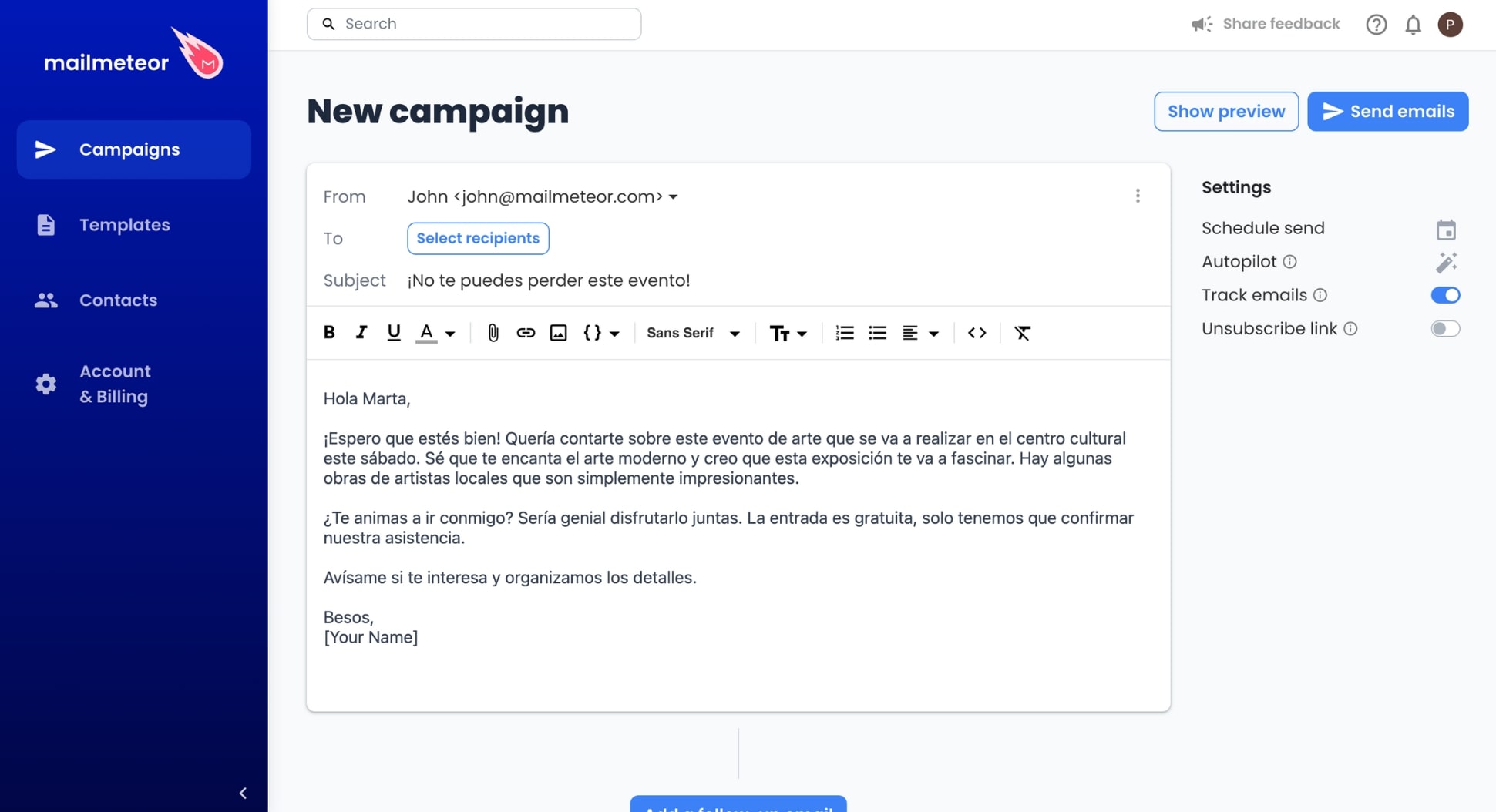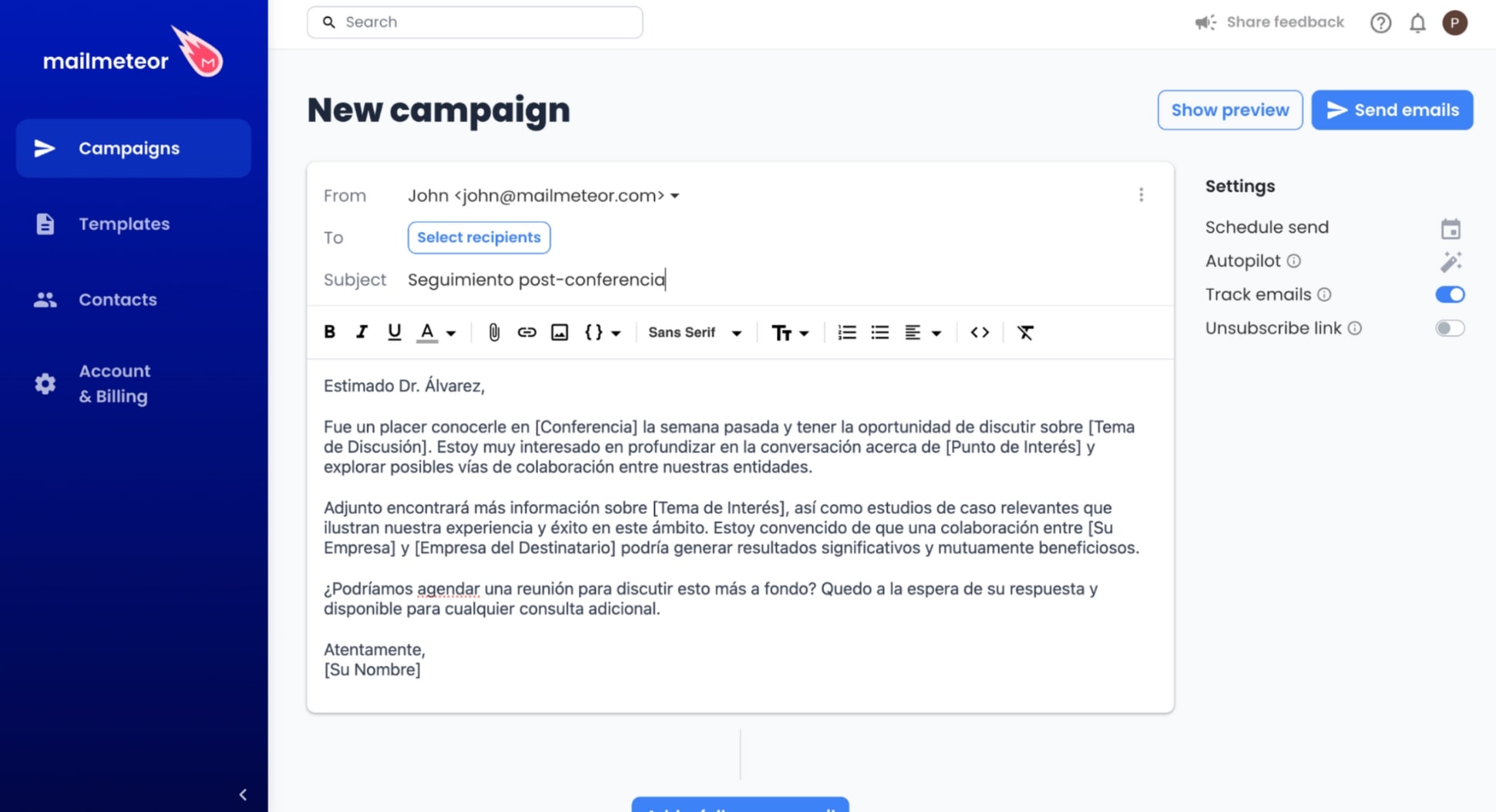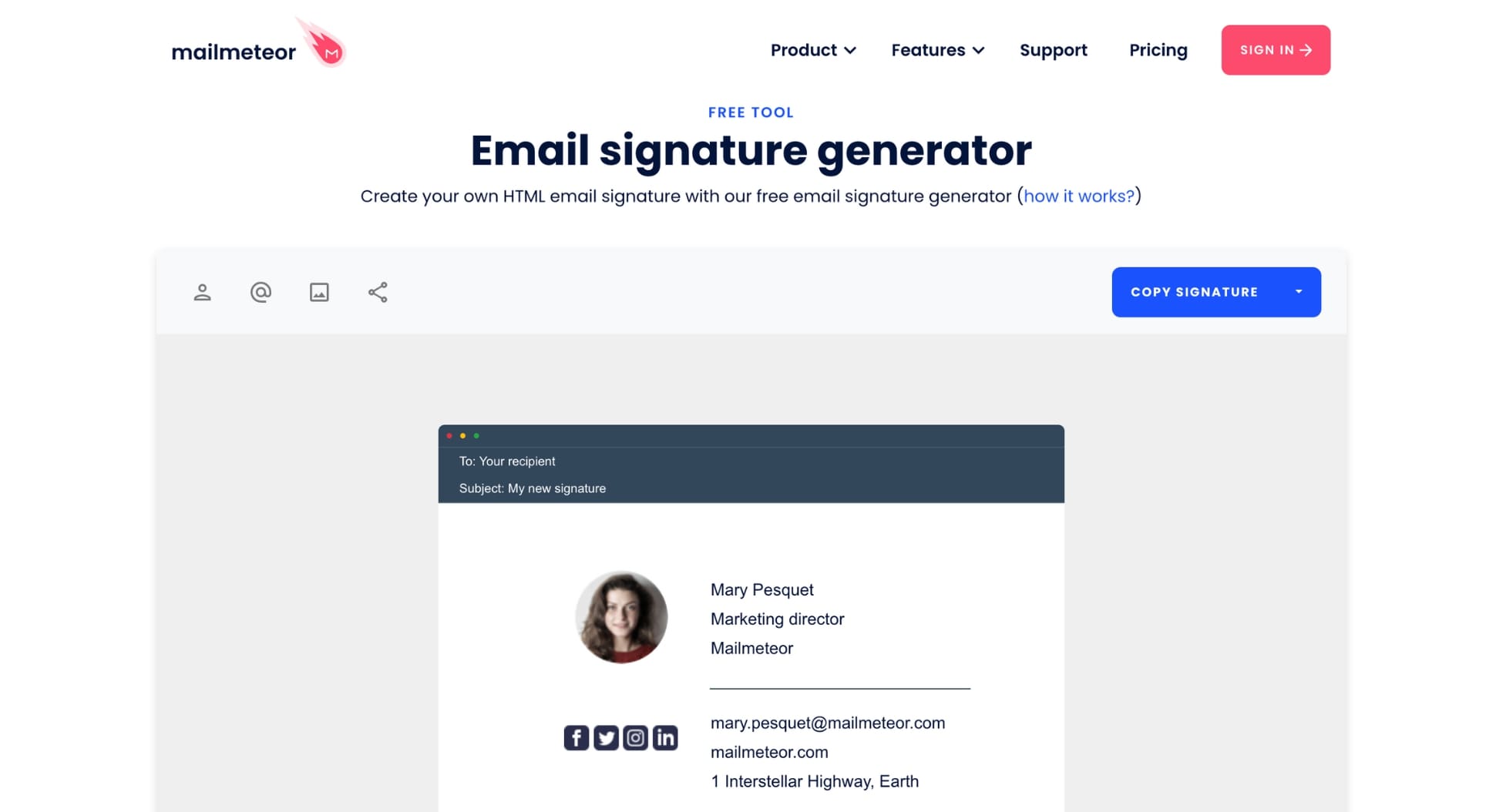Want to send an email to a Spanish recipient? From key phrases and vocabulary to popular greetings, and sign-offs, this quick guide will walk you through everything you need to know to write an email in Spanish.
When it comes to email, each language has its own terminology and cultural specificities. And if you’re using online translation tools, such as Linguee, Reverso, or Google Translate, you could end up writing something offensive, clumsy, or inappropriate in your emails without even realizing it.
Following proper email etiquette in a language you don’t speak fluently can be tricky. Think about it. Would you start an email to a friend with “To whom it may concern”? Conversely, would you sign off a professional email with “Much love”? Each email-related expression has a specific meaning.
So to prevent any blunders, today’s article will focus on Spanish email terminology, popular expressions, and cultural etiquette. Whether you’re a beginner in Spanish or looking to polish your skills, this guide will help you write better emails and connect more effectively with Spanish speakers.
- Key email-related Spanish vocabulary
- Spanish email etiquette
- How to start an email in Spanish
- How to end an email in Spanish
- Spanish email examples
- Other useful phrases
Sounds good? Then let’s dive in.
Key email-related Spanish vocabulary
First, let’s learn some basic Spanish terms related to emails. Understanding words like “email” and other important terminology will make communicating in Spanish through digital platforms much easier.
| English email-related vocabulary | Updated Spanish Translation | Pronunciation in Spanish |
|---|---|---|
| Correo electrónico | Koh-reh-oh eh-lehk-troh-nee-koh | |
| Email address | Dirección de correo electrónico | Dee-rehk-see-on deh koh-reh-oh eh-lehk-troh-nee-koh |
| Email attachment | Archivo adjunto | Ahr-chee-voh ahd-hoon-toh |
| Email subject line | Asunto del correo electrónico | Ah-soon-toh del koh-reh-oh eh-lehk-troh-nee-koh |
| Send an email | Enviar un correo electrónico | Ehn-vee-ahr oon koh-reh-oh eh-lehk-troh-nee-koh |
| Forward an email | Reenviar un correo electrónico | Reh-ehn-vee-ahr oon koh-reh-oh eh-lehk-troh-nee-koh |
| Receive an email | Recibir un correo electrónico | Reh-see-beer oon koh-reh-oh eh-lehk-troh-nee-koh |
| Email thread | Hilo de mensajes | Ee-loh deh mehn-sah-hehs |
| Check your emails | Revisa tus correos electrónicos | Reh-vee-sah toos koh-reh-ohs eh-lehk-troh-nee-kohs |
| Junk email | Correo basura | Koh-reh-oh bah-soo-rah |
| Spam email | Correo no deseado | Koh-reh-oh noh deh-seh-ah-doh |
| Follow up email | Correo de seguimiento | Koh-reh-oh deh seh-gee-mee-en-toh |
| Inbox | Buzón de entrada | Boo-son deh ehn-trah-dah |
| Email draft | Borrador de correo | Boh-rrah-dohr deh koh-reh-oh |
| Reply | Responder | Rehs-pohn-dehr |
| Reply all | Responder a todos | Rehs-pohn-dehr ah toh-dohs |
| CC (Carbon Copy) | CC (Copia de Carbono) | Ceh Ceh (Koh-pee-ah deh Kahr-boh-noh) |
| BCC (Blind Carbon Copy) | CCO (Copia de Carbono Oculta) | Ceh Ceh O (Koh-pee-ah deh Kahr-boh-noh Oh-kool-tah) |
| Sender | Remitente | Reh-mee-tehn-teh |
| Recipient | Destinatario | Dehs-tee-nah-tah-ree-oh |
| Mail merge | Combinación de correspondencia | Kohm-bee-nah-see-on deh kohr-rehs-pohn-dehn-see-ah |
| To | Para | Pah-rah |
| From | De | Deh |
| Mailing list | Lista de correo | Lees-tah deh koh-reh-oh |
| Newsletter | Boletín | Boh-leh-teen |
| Phishing | Suplantación de identidad | Soo-plahn-tah-see-on deh ee-den-tee-dahd |
| Email client | Cliente de correo | Klee-en-teh deh koh-reh-oh |
| Bounce | Rebote | Reh-boh-teh |
| Unsubscribe | Darse de baja | Dahr-seh deh bah-hah |
Spanish email etiquette
In Spanish-speaking cultures, one very important element is to understand that there are two ways to translate “You”. Knowing when to use each form is not just about grammar. It’s also about showing respect.
“Tú” is the informal version of “You”. Use this term when you’re writing an email to a Spanish friend, peer, or family member. This form conveys a sense of closeness and familiarity with the recipient.
Here’s an example of an informal Spanish email (notice we’re using “tú”):

“Usted” is the formal way to say “You” in Spanish. Prefer this term when you’re addressing someone older, in a higher position, or when you’re not well-acquainted. This form is often used in professional settings and business communications.
Here’s an example of a formal Spanish email (this time we’re using “usted”):

The choice between “tú” and “usted” can completely change the tone of your email, so proceed carefully. When in doubt, stick to the more formal version (usted) to avoid unintentional disrespect.
Once you’ve made your choice, use the same “You” form throughout your email. Switching between “tú” and “usted” time and time again will only confuse your recipient and make you seem unprofessional.
How to start an email in Spanish
With that in mind, let’s start working on your email. To begin, you’ll need two things: an enticing subject line to prompt your recipient to open your message and an appropriate salutation to greet them.
Email subject lines in Spanish
In Spanish, the subject line is called “el asunto”. And just like in English, it’s a crucial part of your email. If you mess up your subject line, your recipient may never open your email and read its content.
To write a good email subject line in Spanish, make sure to keep it short. Ideally, your subject should be less than 60 characters. Any longer than that, and it may be truncated on mobile devices and smaller screens.
Your subject line should also accurately reflect the subject of your email. If you’re following up after a conference, you could write “Seguimiento post-conferencia”. If you’re applying for a job, you might say “Solicitud de empleo”.
Email Greetings In Spanish
Always start your emails in Spanish by greeting your recipients. There are dozens of salutations for you to choose from. Make sure to pick an email greeting that fits with the overall tone of your email.
Formal greetings
Here’s a list of formal greetings in Spanish. Pick the one that seems the most appropriate depending on the nature of your relationship with the recipient.
- Estimado Señor [Apellido] – Dear Mr. [Last Name]
- Estimada Señora [Apellido] – Dear Mrs. [Last Name]
- Estimado Sr. Director – Dear Mr. Director
- Apreciado Dr. [Apellido] – Esteemed Dr. [Last Name]
- Muy Señor mío – Dear Sir
- Muy Señora mía – Dear Madam
- A quien corresponda – To whom it may concern
Informal greetings
If you’re close to your recipient, you can use a friendly greeting instead. Here are a few Spanish informal greetings that might suit the tone of your email.
- Hola [Nombre] – Hello [Name]
- Querido/a [Nombre] – Dear [Name]
- Hola a todos – Hello everyone
- ¡Buenas! – Hi!
- ¡Hola! ¿Cómo estás? – Hi! How are you?
- ¡Ey [Nombre]! – Hey [Name]!
- ¿Qué tal [Nombre]? – How’s it going [Name]?
- ¡Hola de nuevo! – Hello again!
- Buenos dias – Good morning
- Buenas tardes – Good afternoon
How to end an email in Spanish
To finish your Spanish email, you’ll need to choose a sign-off that fits the tone of your email and to include your email signature. In this section, we’ll cover different options, depending on the nature of your relationship with your recipient.
Email sign-offs In Spanish
In Spanish, just like in English, it’s important to end your email the right way. Your email sign-off, whether formal or informal, should match how well you know the person you’re writing to.
Formal sign-offs
Here are some formal sign-offs that you can use to send a professional email to a Spanish native you’ve never met or to a potential business partner:
- Saludos cordiales – Best regards
- Atentamente – Sincerely
- Con todo respeto – With all due respect
- Cordialmente – Cordially
- Respetuosamente – Respectfully
- Agradeciéndole de antemano – Thanking you in advance
- Quedo a su disposición – I remain at your disposal
- Esperando su pronta respuesta – Looking forward to your prompt response
- Mis mejores deseos – My best wishes
- Se despide atentamente – Yours faithfully
Informal sign-offs
Here are some informal Spanish sign-offs that you can use to conclude an email to a friend, a relative, or someone you know well.
- Un abrazo – A hug
- Besos – Kisses
- Muchas Gracias – Many thanks
- Cariños – Affectionately
- Con cariño – With affection
- Nos vemos pronto – See you soon
- Espero tus noticias – Looking forward to hear from you
- Nos vemos – See you
- Todo lo mejor – All the best
- Avísame – Let me know
- Saludos – Cheers
- Que tengas un buen día – Have a good day
- Mantenme informado – Keep me posted
- Cuídate – Take care
Email signatures in Spanish
Once you’re done writing your email, don’t forget to include your email signature. Just like in English emails, the goal of your signature is to share your contact details with your recipient.
If you’re writing an email to a friend or a distant relative, you can simply sign your email with your first name and maybe include your phone number. Most Spanish natives don’t use an HTML signature when they send informal messages.
However, if you’re writing a business email in Spanish, add your full name, as well as your phone number, your email address, your job title, the name of your company, some links to your social profiles (if appropriate), and ideally, your profile picture.

Spanish email examples
Want to see what an actual Spanish email looks like? Here are some examples of emails reviewed by Spanish-speaking members of the Mailmeteor team. Feel free to use them as inspiration to write your own email in Spanish.
Email #1: Catching up with a friend
Hola Laura,
¡Espero que este correo te encuentre bien! Ha pasado tanto tiempo desde la última vez que nos vimos y me he estado preguntando cómo te ha ido.
¿Cómo están las cosas por tu lado? Por aquí, todo sigue más o menos igual, aunque he empezado a tomar clases de yoga y me está yendo genial.
Me encantaría ponernos al día. ¿Qué te parece si nos vemos para tomar un café la próxima semana? Dime cuándo te vendría bien.
Un abrazo fuerte,
[Your Signature]
Email #2: Thanking a colleague
Hola Carlos,
Solo quería tomarme un momento para agradecerte personalmente por toda la ayuda que me brindaste con el proyecto la semana pasada.
Tu experiencia y tu enfoque realmente hicieron la diferencia en esos momentos críticos. ¡No sé qué hubiera hecho sin ti!
Espero poder devolverte el favor muy pronto. Si alguna vez necesitas algo, sabes que puedes contar conmigo.
¡Un saludo y gracias de nuevo!
[Your Signature]
Email #3: Sharing a business proposal
Estimada Sra. Gómez,
Adjunto a este correo, encontrará nuestra propuesta para el proyecto [Project], en el cual hemos delineado nuestra estrategia, metodología y un estimado preliminar de costos y tiempos de entrega. Estamos convencidos de que nuestra propuesta ofrece una solución innovadora que se alinea con los objetivos de [Company].
Quedamos a su disposición para cualquier consulta o para agendar una reunión y discutir la propuesta en más detalle. Estamos comprometidos con la excelencia y convencidos de que podemos aportar un valor significativo a [Company] a través de este proyecto.
Agradezco la oportunidad de presentar esta propuesta y espero su respuesta.
Cordialmente,
[Your Signature]
Other useful phrases
Let’s wrap things up with a few more email-related terms and expressions that you can use to sound like a true Spaniard.
- Quedamos en contacto. – Let’s stay in touch.
- Escríbeme cuando puedas. – Write me when you can.
- ¿Qué tal todo? – How’s everything going?
- Espero tu respuesta. – I look forward to your reply.
- No te olvides de escribirme. – Don’t forget to write to me.
- Dame un toque cuando recibas esto. – Give me a shout when you get this.
- Te escribo para contarte que… – I’m writing to tell you that…
- ¡Cuánto tiempo sin saber de ti! – It’s been so long since I’ve heard from you!
- ¡Escríbeme pronto! – Write me soon!
- Estoy deseando saber de ti. – I’m looking forward to hearing from you.
- ¿Podemos quedar para hablar de esto? – Can we meet to talk about this?
- Esto me suena genial. ¿Qué te parece? – This sounds great. What do you think?
- Acabo de recibir tu correo. – I just got your email.
- A propósito, ¿recibiste mi último mensaje? – By the way, did you receive my last message?
- ¡Mil gracias por tu ayuda! – Thanks a ton for your help!
- Lamento la demora en responder. – Sorry for the delayed response.
- Te adjunto los documentos que necesitas. – I’m attaching the documents you need.
- Estaré fuera de la oficina hasta el… – I’ll be out of the office until…
- Asegúrate de revisar el documento adjunto. – Make sure to check the attached document.
- Si necesitas más información, no dudes en preguntar. – If you need more information, don’t hesitate to ask.
Conclusion
That’s it for today. By now you should know how to say “email” in Spanish, how to properly address your recipient, and how to greet them or sign off your emails like a native Spanish speaker.
What’s next? If you want to personalize your Spanish emails at scale, you may want to check out what we do here, at Mailmeteor. Our app lets you send up to 2,000 emails a day directly from your Gmail account.
You can also track your emails’ performance in real-time, schedule automated follow-ups, optimize your deliverability, and more. Alright you’ve got an email to write in Spanish now, so we’ll leave you to it.
Good luck, or should we say… Buena suerte con tu correo electrónico :)



